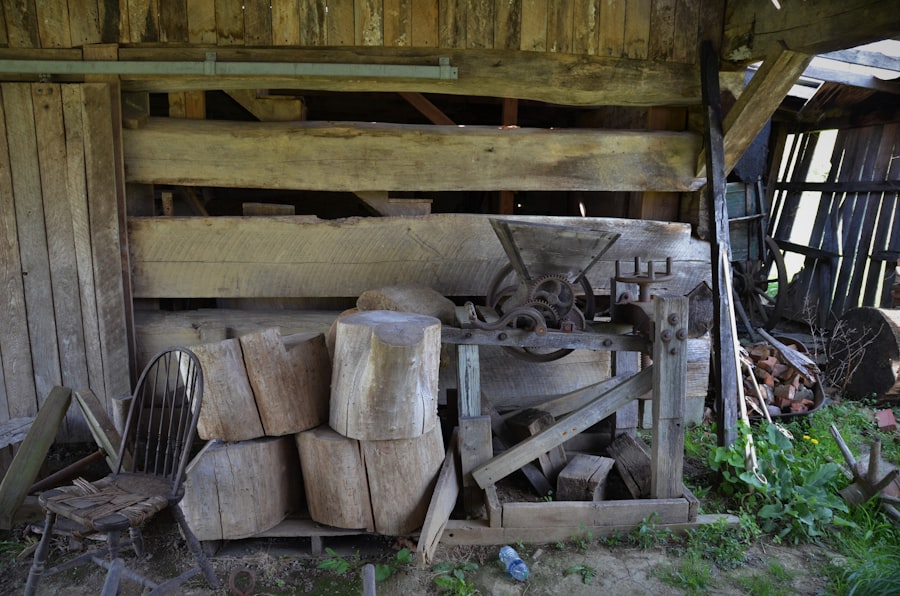Custom cabinetry and millwork play a pivotal role in the overall aesthetic and functionality of a home. Unlike mass-produced options, custom cabinetry is tailored to meet the specific needs and preferences of the homeowner, allowing for a unique expression of style and personality. This bespoke approach not only enhances the visual appeal of a space but also ensures that every inch is utilized effectively.
For instance, in a small kitchen, custom cabinets can be designed to fit into awkward corners or underutilized spaces, maximizing storage while maintaining a cohesive look. Moreover, custom millwork adds an element of craftsmanship that is often absent in factory-made products. The intricate details found in custom moldings, trims, and built-ins can elevate the design of any room, creating a sense of luxury and sophistication.
This attention to detail can transform ordinary spaces into extraordinary ones, making them more inviting and functional. The ability to choose specific styles, finishes, and hardware means that homeowners can create a cohesive design that reflects their personal taste and complements the architecture of their home.
Key Takeaways
- Custom cabinetry and millwork enhance both the functionality and aesthetic appeal of your home.
- Drawing inspiration from various sources helps create personalized and unique designs.
- Choosing high-quality materials is crucial for durability and style.
- Collaborating with skilled craftsmen ensures precision and expert craftsmanship.
- Proper maintenance extends the life and beauty of your custom cabinetry and millwork.
Finding Inspiration for Your Custom Cabinetry and Millwork
When embarking on a journey to create custom cabinetry and millwork, finding inspiration is a crucial first step. Homeowners can draw ideas from various sources, including design magazines, online platforms like Pinterest and Instagram, or even visits to showrooms and home improvement stores. These resources provide a wealth of visual examples that can spark creativity and help clarify what styles resonate most with the homeowner’s vision.
For instance, a homeowner might find inspiration in a modern farmhouse kitchen featuring open shelving and rustic wood finishes, which could lead to a desire for similar elements in their own space. Additionally, exploring different architectural styles can provide insight into how cabinetry and millwork can enhance a home’s character. For example, traditional homes may benefit from ornate crown moldings and raised panel cabinets, while contemporary spaces might call for sleek lines and minimalist designs.
Visiting historical homes or architectural landmarks can also offer valuable lessons in craftsmanship and design principles that can be adapted for modern living. By gathering diverse ideas and influences, homeowners can develop a clearer picture of their desired outcome, ensuring that their custom cabinetry and millwork align with their overall design goals.
Selecting the Right Materials for Your Custom Cabinetry and Millwork

The choice of materials is fundamental when it comes to custom cabinetry and millwork, as it directly impacts both aesthetics and durability. Wood is often the material of choice due to its versatility and natural beauty. Different species of wood offer varying grains, colors, and textures; for example, oak provides a robust appearance with prominent grain patterns, while maple offers a smoother finish that can be stained or painted to suit any design scheme.
Additionally, engineered materials like plywood or MDF (medium-density fiberboard) can be excellent alternatives for specific applications, particularly when cost or environmental factors are considered. Beyond wood, the finish applied to cabinetry plays a significant role in its overall look and longevity. Stains can enhance the natural beauty of wood while providing protection against wear and tear.
Paints offer an opportunity for bold color choices that can make a statement in any room. Furthermore, the use of laminates or veneers can provide an affordable way to achieve high-end looks without the associated costs of solid wood. Homeowners should also consider the environmental impact of their material choices; opting for sustainably sourced woods or low-VOC finishes can contribute to healthier indoor air quality while supporting eco-friendly practices.
Working with a Skilled Craftsman for Your Custom Cabinetry and Millwork
| Metric | Description | Typical Range | Importance |
|---|---|---|---|
| Customization Level | Degree to which cabinetry and millwork are tailored to client specifications | Standard to Fully Custom | High |
| Material Quality | Grade and type of wood or materials used in cabinetry and millwork | Medium to Premium Hardwood | High |
| Craftsmanship Time | Time taken by the craftsman to complete the project | 2 to 8 weeks | Medium |
| Precision & Fit | Accuracy of measurements and fitting of cabinetry components | Within 1-2 mm tolerance | High |
| Design Complexity | Level of detail and intricacy in design elements | Simple to Highly Intricate | Medium to High |
| Durability | Expected lifespan and resistance to wear | 10 to 30+ years | High |
| Client Satisfaction Rate | Percentage of clients satisfied with the final product | 85% to 98% | High |
| Cost Efficiency | Balance between cost and quality delivered | Varies by project scope | Medium |
Collaborating with a skilled craftsman is essential for bringing custom cabinetry and millwork projects to life. A seasoned professional not only possesses the technical skills required for precise construction but also has an eye for design that can help refine the homeowner’s vision. When selecting a craftsman, it’s important to review their portfolio to ensure their style aligns with the desired outcome.
Engaging in discussions about previous projects can provide insight into their problem-solving abilities and creativity in overcoming design challenges. Effective communication is key throughout the process. Homeowners should feel comfortable discussing their ideas, preferences, and any concerns they may have.
A good craftsman will listen attentively and offer suggestions based on their expertise while ensuring that the final product meets the homeowner’s expectations. This collaborative approach fosters a sense of partnership that can lead to innovative solutions tailored specifically to the space. Additionally, understanding the timeline and budget from the outset helps manage expectations and ensures that the project progresses smoothly.
Incorporating Functional Design Elements into Your Custom Cabinetry and Millwork
Functional design elements are crucial in custom cabinetry and millwork as they enhance usability while maintaining aesthetic appeal. Features such as pull-out shelves, lazy Susans, or built-in dividers can significantly improve organization within cabinets, making it easier to access items without cluttering countertops or other surfaces. For instance, incorporating deep drawers with dividers in a kitchen can streamline cooking processes by keeping utensils organized and within reach.
In addition to storage solutions, integrating technology into cabinetry design is becoming increasingly popular. Homeowners may choose to include charging stations within cabinets or smart home features that allow for remote control of lighting or appliances. These modern conveniences not only add functionality but also contribute to a seamless integration of technology into daily life.
By considering how cabinetry will be used on a day-to-day basis, homeowners can create spaces that are not only beautiful but also highly practical.
Maximizing Storage and Organization with Custom Cabinetry and Millwork

One of the primary advantages of custom cabinetry is its ability to maximize storage and organization in any space. In kitchens, for example, custom cabinets can be designed to accommodate specific appliances or pantry items, ensuring that everything has its designated place. This tailored approach allows homeowners to utilize every inch of available space effectively, transforming even the smallest kitchens into functional culinary havens.
In living areas or home offices, custom millwork can provide built-in shelving units that not only display books or decorative items but also conceal clutter behind closed doors. The strategic placement of cabinets around windows or under staircases can further enhance storage capabilities without sacrificing style. By thinking creatively about how spaces are used, homeowners can work with designers to develop solutions that cater to their unique needs while maintaining an organized environment.
Adding Value to Your Home with Custom Cabinetry and Millwork
Investing in custom cabinetry and millwork is not just about enhancing personal enjoyment; it also adds significant value to a home. Potential buyers often view high-quality cabinetry as a hallmark of well-designed spaces, making homes with custom features more appealing in competitive real estate markets. For instance, kitchens equipped with bespoke cabinetry are frequently highlighted in listings as key selling points, often leading to quicker sales at higher prices.
Moreover, custom millwork can elevate other areas of the home as well—think built-in bookcases in living rooms or elegant wainscoting in dining areas. These features contribute to an overall sense of craftsmanship that resonates with buyers looking for quality over quantity. As trends shift towards personalization in home design, having unique elements like custom cabinetry sets a property apart from others on the market.
Maintaining and Caring for Your Custom Cabinetry and Millwork
Proper maintenance is essential for preserving the beauty and functionality of custom cabinetry and millwork over time. Regular cleaning with gentle products helps prevent buildup that could damage finishes or hardware. For wooden surfaces, using a soft cloth along with appropriate wood cleaners ensures that the natural grain remains intact while protecting against scratches or dullness.
Additionally, periodic inspections are advisable to identify any signs of wear or damage early on. This proactive approach allows homeowners to address issues such as loose hinges or chipped paint before they escalate into more significant problems. For those who have opted for painted finishes, touch-ups may be necessary over time to maintain a fresh appearance.
By investing time in care routines, homeowners can enjoy their custom cabinetry and millwork for years to come while preserving its original charm and functionality.



